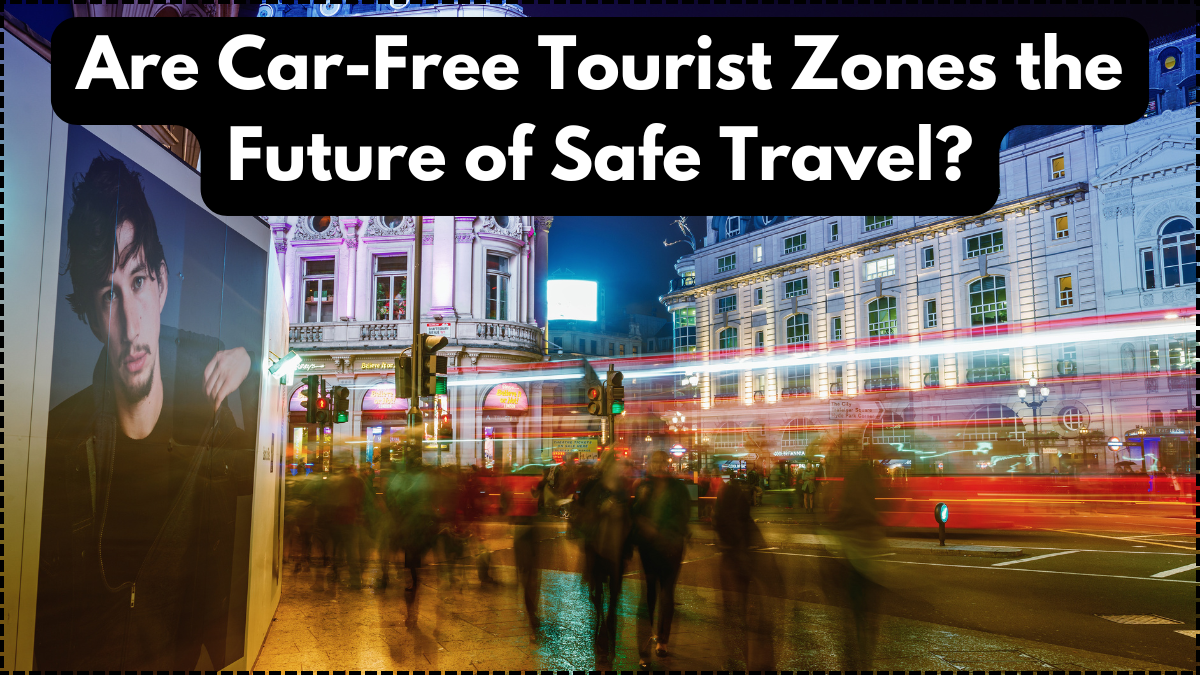In July 2025, the concept of car-free tourist zones is gaining momentum worldwide as cities and destinations prioritize tourist safety and environmental sustainability. These zones restrict or completely ban motor vehicles in popular tourist areas to create safer, quieter, and more enjoyable environments. From bustling European plazas to heritage sites in Asia, the shift toward pedestrian-friendly travel spaces is transforming how people experience their favorite destinations.
The growing adoption of car-free tourist zones reflects a new travel philosophy that balances visitor access with community well-being and environmental protection.

Why Car-Free Tourist Zones Enhance Tourist Safety
Vehicle congestion in tourist hotspots has long been a concern due to the risks it poses to pedestrians and the overall quality of the visit. By designating car-free tourist zones, cities effectively reduce traffic accidents, air pollution, and noise levels, significantly improving tourist safety and comfort.
Key safety benefits include:
-
Eliminating vehicle-pedestrian collisions in crowded areas
-
Reducing air pollution that can affect vulnerable groups
-
Lowering noise pollution for a more pleasant atmosphere
-
Allowing emergency and service vehicles controlled access only
These improvements make tourist sites more accessible to families, elderly visitors, and people with disabilities.
Examples of Car-Free Tourist Zones in 2025
Many destinations have successfully implemented car-free tourist zones as part of their urban planning and tourism strategies. The following table highlights some well-known zones along with their size, restrictions, and key benefits:
| Location | Zone Size (sq km) | Vehicle Restrictions | Benefits |
|---|---|---|---|
| Venice, Italy | 0.8 | No private vehicles; limited delivery | Preserves historic charm, pedestrian safety |
| Barcelona, Spain | 1.2 | Ban on cars except residents | Reduced pollution, safer streets |
| Jaipur, India | 0.5 | Restricted vehicle hours; pedestrian-only zones | Cultural preservation, improved visitor experience |
| Cape Town, South Africa | 0.9 | No cars in main waterfront district | Wildlife protection, safer walks |
| Kyoto, Japan | 1.0 | Car ban in temple and garden areas | Enhanced tranquility, fewer accidents |
These zones prove that thoughtful restrictions on vehicles create safer and more sustainable tourism environments.
Environmental and Social Impact of Car-Free Zones
Beyond tourist safety, car-free tourist zones contribute to reducing carbon emissions, improving air quality, and enhancing community life. By limiting traffic, these zones reduce urban heat, lower greenhouse gases, and preserve historical sites that might otherwise suffer damage from vibrations and pollution.
Socially, car-free zones encourage:
-
Increased pedestrian and cyclist activity
-
Greater opportunities for local businesses to engage tourists
-
Cultural events and outdoor markets that attract visitors
-
Stronger community bonds through shared public spaces
Together, these factors help promote responsible tourism and local pride.
Challenges and Solutions in Implementing Car-Free Zones
While the benefits are clear, establishing car-free tourist zones requires careful planning to address potential challenges:
-
Managing deliveries and emergency access without disrupting services
-
Providing adequate parking outside the zones
-
Educating tourists and locals about the rules and benefits
-
Ensuring accessibility for disabled visitors
Innovative solutions such as timed vehicle access, shuttle services, and digital signage are increasingly employed to mitigate these challenges effectively.
Conclusion
As of July 2025, car-free tourist zones are becoming a popular and effective strategy for enhancing tourist safety and sustainability worldwide. These zones transform crowded and polluted tourist areas into safe, accessible, and pleasant environments for visitors and residents alike. The trend signals a shift toward more responsible travel where the well-being of people and places takes priority. For the future of tourism, car-free tourist zones represent a vital step in creating safer, cleaner, and more enjoyable travel experiences.
FAQs
What are car-free tourist zones?
They are designated areas where motor vehicles are restricted or banned to enhance pedestrian safety and environmental quality.
How do car-free zones improve tourist safety?
By reducing vehicle traffic, these zones lower the risk of accidents, improve air quality, and reduce noise pollution.
Are there exceptions for residents or emergency vehicles?
Most zones allow limited access for residents, deliveries during certain hours, and emergency services under controlled conditions.
How can tourists navigate these zones without cars?
Visitors often use walking, cycling, or electric shuttle services designed to operate within or around the zones.
Click here to learn more